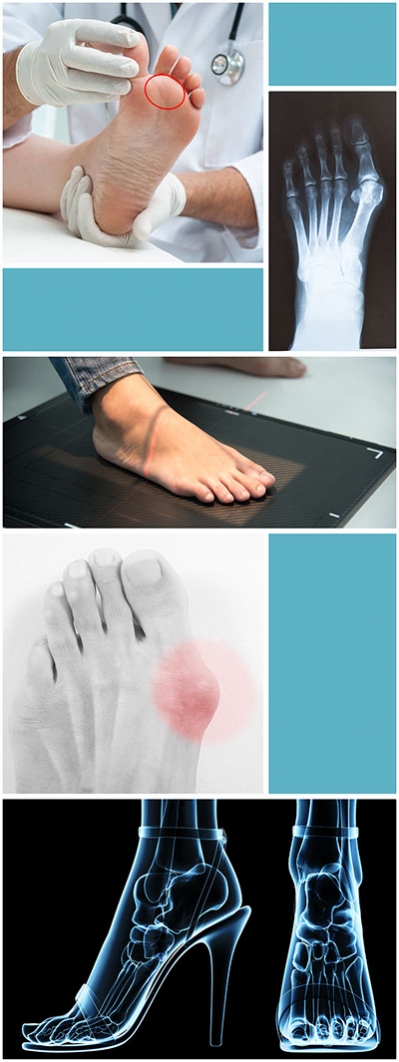Diagnosis & Consultation
Diagnosis
Every Bunion appears individually, so the key basis for a successful treatment is a diligent clinical examination. An experienced specialist is able to diagnose the Bunion after thoroughly checking the foot’s visual appearance and asking about symptoms and the individual medical history. We will take x-ray images of the foot and if necessary use MRI to ensure the diagnosis and exclude any other possible diseases. The technology of Foot Pressure Measurement can also provide significantly important results. The extent of the angle among metatarsal bones and between the big toe tells us about the severity, which can be classified as slight, moderate or severe. Taking all that into account, we gather information about the patient’s bone quality and joints and are able to choose a well-founded surgical technique. Achieving aesthetical results requires years of training and experience concerning Hallux Valgus deformities. I always make sure to pay attention to incision, mindful of the final result.
Foot Pressure Measurement
The Foot Pressure Measurement is a method of gathering information about the pressure distribution while standing or walking. Due to this technology it is possible to precisely analyze an unnatural gait pattern, taking the rolling movement and the shifting of the body’s center into consideration. Like that, we are able to discover a malposition or disharmony at an early stage. Modern measuring stations allow us to produce a plastic image of the patient’s footprint, making it possible to diagnose potential bone and muscle diseases.
In case of a Bunion, the Foot Pressure measurement, x-ray images and MRI scans are proven to be the most reliable examination methods. They offer a comparison between an initial situation and finally the outcome of the surgical correction and show improvements concerning the gait’s dynamic. The used measurement device is a particularly safe one because it renounces radiation, medication and surgical procedures.


